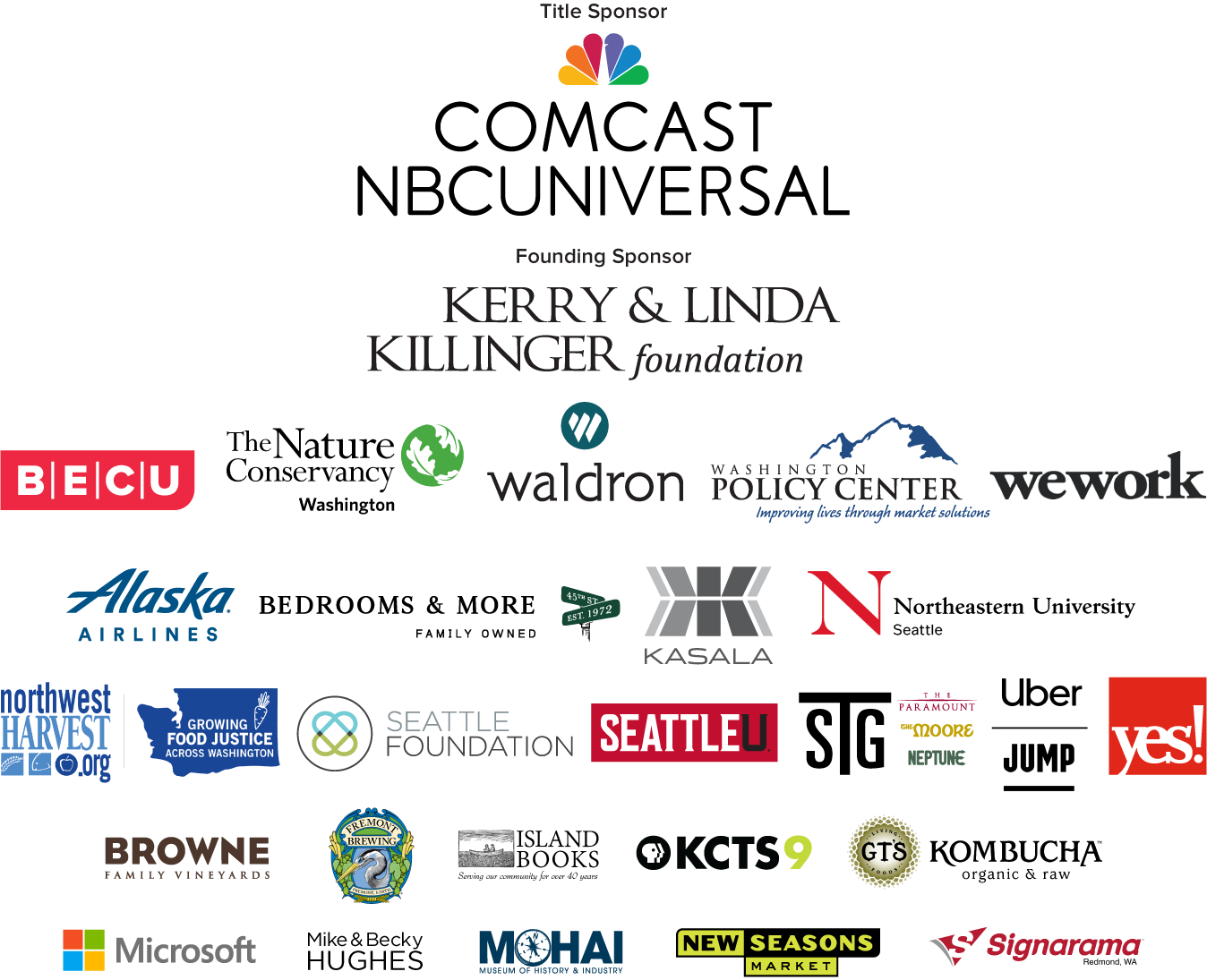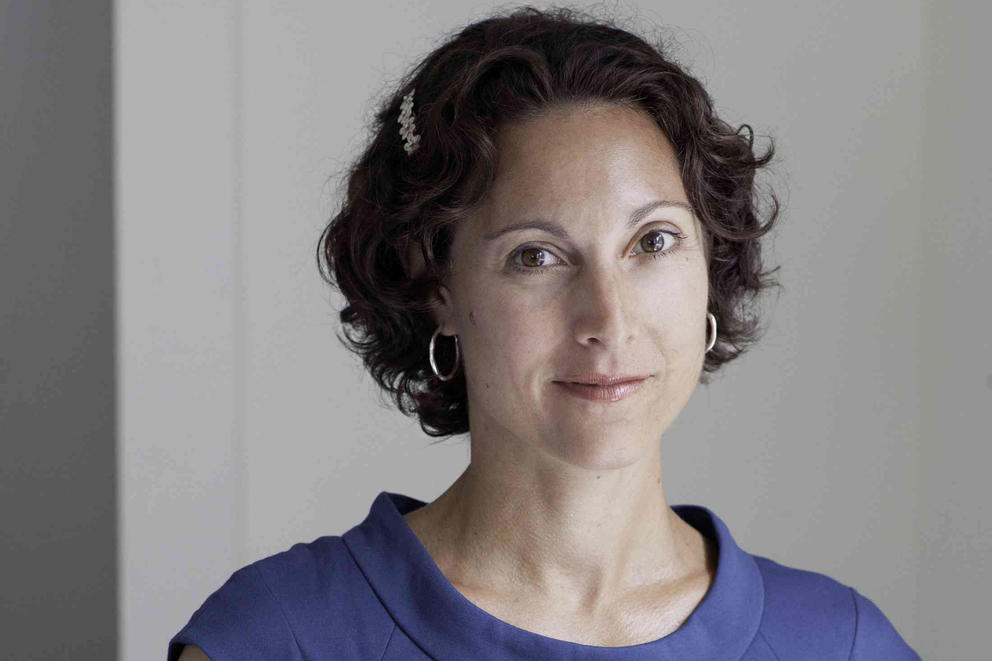Sponsored Content
Emily Bazelon investigates the power of prosecutors and the idea that winning is everything
The unchecked power of prosecutors has become a regular part of discussions about the United States criminal justice system. But a decade — before the rise of true-crime podcasts and bipartisan concerns over mass incarceration — it wasn’t so visible. For most people, anyway.
To journalist Emily Bazelon, it was front of mind, as she worked on a story about California’s three strikes law. The topic stuck with her and informed her work as a staff writer at the New York Times Magazine and a co-host of Slate’s Political Gabfest.
The culmination of her investigation arrived in bookstores last week, with the publication of Charged: The New Movement to Transform American Prosecution and End Mass Incarceration. In this, her second book, Bazelon charts the power of prosecutors via two individual narratives (and a whole lot of investigative research). She finds that not only have district and state attorneys played an outsized role in putting so many people behind bars — especially people of color — but the work they do can also be a crucial part of a new, bipartisan effort to reform the criminal justice system.
At the Crosscut Festival, Bazelon will join Stanford University psychology professor Dr. Jennifer Eberhardt for the “Unbreaking the Criminal Justice System” panel on Saturday, May 4, to discuss how we got here — a nation that incarcerates a greater percentage of its population than any other country in the world — and what it might take to get back to a more balanced system.
This interview has been edited for length and clarity.
First off, how did you come up with the idea for this book?
I had been interested in prosecutors for a number of years. I did a story for the Times magazine in 2010 that kind of made me wake up to how much power prosecutors have. And then in 2015 I started working on a story about Noura Jackson, who is one of the main characters in the book. And that was really prompted by my interest in the idea that you could have a district attorney’s office with a pattern of breaking the rules [without consequences]. The DA’s office in Memphis [where Jackson's case takes place] had this pattern of what are called Brady violations, which is when the defense doesn’t get all the evidence it’s entitled to because the prosecutors withhold something. I was just like, “How does that happen? How do you have this recurring pattern of violating people’s rights?”
There was this group that’s now called The Justice Collaborative, and they had put together this list of prosecutors’ offices with the worst records of misconduct across the country — and Memphis was one of them. That was sort of my entry point. Then I found Noura’s case and got just really hooked on that story. And so as I was working on that story for the Times magazine, I was also working on a book proposal about prosecutors more broadly, thinking that I would use Noura’s story, [and] realizing that I wanted to write about abuses by prosecutors, but that what was really more important were the legal ways in which prosecutors flex their muscles and use their power.
It does seem like the huge discretionary power of the prosecutor is out there in the culture right now — just check out the last episode of the HBO documentary on the case of Adnan Syed — but not many people have pointed out its role in contributing to mass incarceration, as you have.
The way I think about this is prosecutors have all this power and we don’t notice them very much. We see the cops on the streets all the time, judges wear their robes; prosecutors are just lawyers in suits. They blend into the background much more easily. But then once you see how much discretionary power they have, you start to see it everywhere.
Anyway, that’s how it was for me. The 2010 story I was referring to earlier, I was interviewing a prosecutor for it, Steve Cooley, and he told me a story about a homeless guy who’d been prosecuted for a third strike, back when Cooley had just started as an assistant DA. The homeless man, Gregory Taylor, had unscrewed the screen door to a food pantry in a church to get food because he was hungry. It was technically a third strike under California laws. And Steve saw this and was like, “I wouldn’t charge this as a third strike. This doesn’t seem like the right answer for this case.” But it wasn’t his case. It landed on the desk of the guy next to him.
That guy charged Gregory Taylor with a third strike and he went to prison for life. Steve Cooley, at the point he was talking to me, had become the elected district attorney in Los Angeles. He was a conservative Republican, but to him, this story showed the way the three strikes law was out of control, and so he was actually a critic of the law and trying to reform the law.
I just thought that was so crazy — that this guy who seems like such an unlikely ally of California reformers had had this experience. But I also was just left with this story about this guy, Gregory Taylor, like, my god, his whole life was shaped by the fact that his file landed on one person’s desk and not the other’s.
If you had to pull out from your research one or two things that you think prosecutors are doing that contribute the most to how many people we have in prison today, what would they be?
The thing they’re doing the most is overcharging. First, they’re charging for minor offenses, where really the criminal justice system should not be the place where you land — like trespassing or spitting on the sidewalk or loitering, these crimes we have which are really just about being poor. And then they’re overcharging because the more leverage you have over someone because they’re facing a higher sentence, the easier it is for them to plead guilty.
So district attorneys, state’s attorneys — these are people who are elected, they’re supposed to represent the state, they’re supposed to represent the people, they’re supposed to represent justice, but then, arguably, they really just want to win?
Yes, I think that’s the problem. In theory they have this dual responsibility; they’re also ministers of justice. In reality, they want to win cases. That’s why a lot of them go into the profession, and all of the incentives are structured that way. If you want to be a prosecutor where you’re trying to emphasize fairness, you have to figure out a way to change the reward system, so that people also get rewards for declining cases or sending people to diversion, away from prisons. But traditionally, you’re right, that’s how prosecutors have been rewarded.
How do you describe, based on your research over the years, why there’s this kind of prosecutorial power? How did this imbalance come to be?
So, if you go back to the 1970s, the United States had a pretty low rate of incarceration, the same rate as Scandinavia has today. And then we had a big crime wave and people got really scared. There was pressure on lawmakers to do something about it, and there were some politicians, starting with Richard Nixon, who did a really evil-genius job of exploiting people’s fears and running on these law-and-order promises that then translated into much harsher sentencing laws.
One of the main changes was this drive toward mandatory minimum sentences. And the thing about mandatory minimums is they were passed to send people to prison for a longer amount of time and to deal with this idea of the “soft judge,” but what people didn’t really talk about, but what is true, is that if you take discretion away from judges it has to go somewhere. There’s always going to be some discretion in the system. Mandatory minimums took discretion from judges and gave it to prosecutors. But we didn’t talk about it that way. It wasn’t like the people who passed those laws were like, “Now we want prosecutors to change their role and have much more power.” We didn’t say that. But that was the effect.
So that’s one major reason. If you want to add another factor, another thing that happens in the 1970s is that the Supreme Court gets a case that’s basically asking the court, “Are there any limits to plea bargaining?” If the prosecutor says to you, “I’ll put you in jail for six months if you plead guilty, but if you go to trial, then you’ll get a life sentence,” is there any moment at which that becomes so wildly out of proportion that it’s unconstitutional? And the Supreme Court said no.
In that moment, they imagined that this is just a bargain; Both sides, the defense and the prosecution, have equal bargaining power. But that is just not true. That sort of fiction led the court to say that there were no constitutional limits on plea bargaining. That case was from 1978. So then, again, you see this whole mechanism, this whole machine, get powered up, that’s all about convicting people through plea bargains. Now, in state court, 98 or 99 percent of cases are resolved through plea bargains, not trials. That’s totally at odds with people’s vision of American justice, but that is the reality. And it’s a reality that leaves all of the key decisions in the hands of prosecutors.
In the book, you point out this concept of “tunnel vision” — a form of bias on the part of prosecutors. I wonder if you could talk about that.
Right. So I don’t think prosecutors generally have a bias in the sense of corruption or misconduct. But I think it is true that when your job is mostly to win convictions, and that’s the thing that prosecutors are often rewarded for, once you decide who you think committed the crime, there’s a lot of incentive to continue thinking that, and to see the evidence that you have in that light. That’s what tunnel vision is. It’s another way of talking about confirmation bias: where you’re sorting through information and evidence that can lead you in different directions, and you go in a direction that confirms what you already think is true. There are some cases in which it is clear who committed the crime; I’m really talking about cases in which it’s not clear. But it’s like, once things get going, it’s hard to stop the train.
Speaking of bias, a major theme in any conversation about mass incarceration in the United States is race. How do prosecutors (or do prosecutors), based on your research, contribute to the disproportionate number of Black and Brown people incarcerated?
We know that racial bias can and does get introduced at various parts of the criminal justice system. We also have research specifically about prosecutors. When they make charging decisions, for example, there’s evidence that people who are accused of similar behavior are more likely to be charged with more serious crimes if they’re Black — or charged at all. And so the very unfortunate way in which African Americans and also Latinos are held to a different standard and kind of viewed with suspicion — that is something we know plays out in prosecutors’ offices.
Recently, in the last year, there was some research about attitudes on race in various prosecutors’ offices, and one of those offices was in Jacksonville, Florida. It was really pretty shocking to read about the assumptions about race that prosecutors there were making. And that’s an office where the elected district attorney has come in and really tried to be a reformer. It just really shows that she has a big challenge in front of her.
When you think about people who are making decisions about how to charge crimes and how to enforce the law, if those people are saying in the survey that they think that Black people are more likely to be criminals, that’s pretty terrifying.
Yet another reason to have this conversation about the outsized discretionary power of prosecutors.
Right. I think we’ve gotten accustomed to thinking about the problems of cops shooting unarmed black people. We are very aware of that because it’s so public and horrific. But these hidden biases that also can have an enormous impact on people’s lives — those are also important to consider.
Still, what it sounds like you’ve been charting in this book is a kind of shift.
Yes. There are some offices — and actually King County, Washington, is a prosecutor’s office that has been relatively interested in not overcharging, in trying to look back at old sentences that came in the beginning of the three strikes era, and think whether it really makes sense for those people to be spending the rest of their lives in prison.
Do you think this shift is significant? That we’re on the cusp of some kind of transformation when it comes to prosecutors — or that arguably things are getting better in terms of mass incarceration?
The rates are starting to go down slightly. They’re just not going down dramatically enough. If we continue with our current rate of lowering mass incarceration, we’ll cut it in half in 75 years. By that measure, we are very far from where we need to be. I do think that the movement really in the last few years to elect people who are making progressive promises to the office of district attorney is the huge, big new thing that hasn’t happened in this way before and has a lot of promise behind it. It also is early days.
There are some promising things happening, but it’s hard to tell, frankly, how well it’s going to work. I think the most promising thing about it is that people who are elected by this social movement, they just are answering to a different constituency. And these are elections that not many people vote in. You can make a huge difference that is pretty distinct. I think in a moment where especially for progressives there’s so much frustration and feelings of hopelessness with the national government, it’s pretty empowering to think, “I can really transform the criminal justice system through a local election.”
Because we elect prosecutors, their power is our power. We have a lot of ability to shape who they are and how they do their jobs. I think people are just starting to wake up to that. A couple years ago, the ACLU did a survey and they asked people whether they had the power to elect their local DA, and half of people didn’t know the answer. Just for that to change would be a big deal in America.
Buy your tickets to Crosscut Festival now!



